The Ruins of the Guge are a testament to the ancient Guge kingdom that once flourished in the far west of Tibet. This archaeological site reveals a civilization that thrived for centuries before mysteriously disappearing. The ruins are located on a high and dry plateau, offering a glimpse into a sophisticated culture with a unique blend of Buddhism and indigenous beliefs. The remnants of palaces, temples, and houses, along with intricate murals and statues, provide valuable insights into the artistic and spiritual life of the Guge people.
Get your dose of History via Email
Historical Background of the Ruins of the Guge
The Ruins of the Guge were once the center of the Guge kingdom, established around the 10th century. This kingdom was a hub of culture and religion in the Tibetan region. The ruins were discovered in the early 20th century by Western explorers. Among them was Italian scholar Giuseppe Tucci, who visited the site in the 1930s. The Guge kingdom was built by descendants of the Tibetan royal lineage and it thrived for about 700 years.
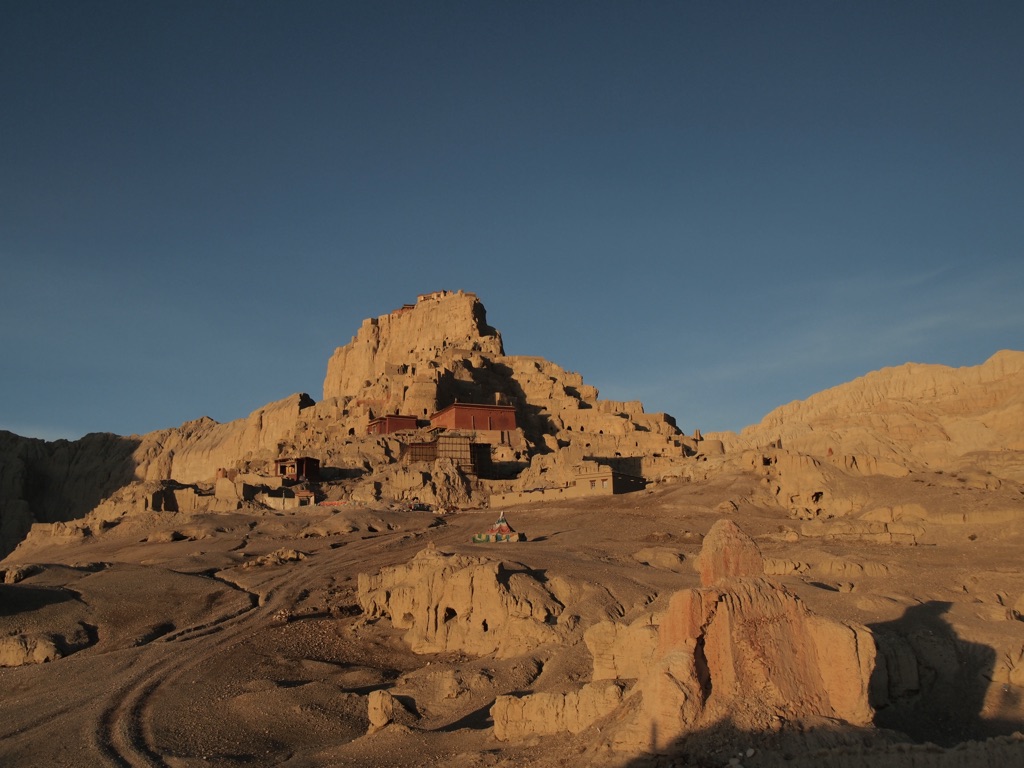
Throughout its history, the Guge kingdom played a significant role in the revival of Buddhism in Tibet. It was a beacon of religious and cultural exchange, particularly with neighboring regions like India. The kingdom eventually fell into decline and was abandoned, with theories suggesting invasion or ecological disaster as possible causes. The exact reason for its demise remains a mystery.
After its fall, the Ruins of the Guge lay untouched and preserved by the arid climate. The site was not well-known until the 20th century, when explorers and archaeologists began to uncover its secrets. The ruins have since become a valuable source of historical and cultural knowledge, shedding light on the Guge civilization and its contributions to Tibetan culture.
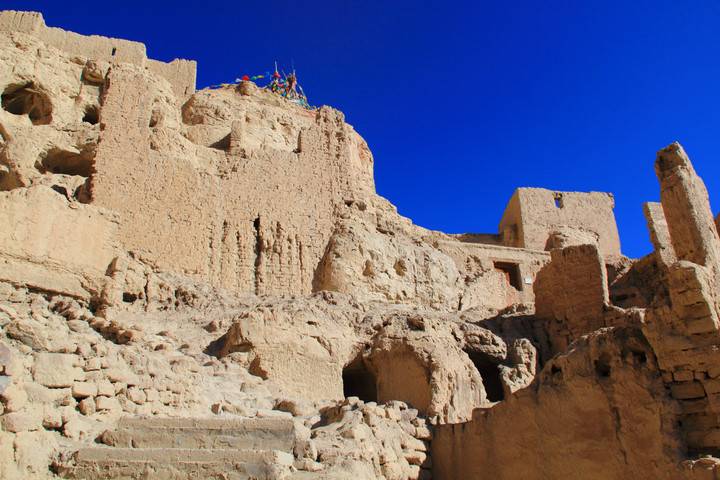
The Guge kingdom was not only a political and religious center but also a strategic trading post. It connected the Tibetan Plateau with the rest of Asia, facilitating the exchange of goods and ideas. The kingdom’s influence extended far beyond its borders, impacting the development of Buddhism and the cultural landscape of the region.
Today, the Ruins of the Guge stand as a silent witness to the kingdom’s past glory. They attract scholars and tourists alike, who come to marvel at the intricate art and architecture. The site also serves as a poignant reminder of the impermanence of even the most powerful civilizations.
About the Ruins of the Guge
The Ruins of the Guge are located on a remote hilltop in the Ngari Prefecture of Tibet. The site encompasses an area of approximately 180,000 square meters. The ruins consist of over 300 caves, fortresses, and structures carved into the mountainside. The architecture of Guge is a blend of Indian and Tibetan styles, reflecting the kingdom’s cultural connections.
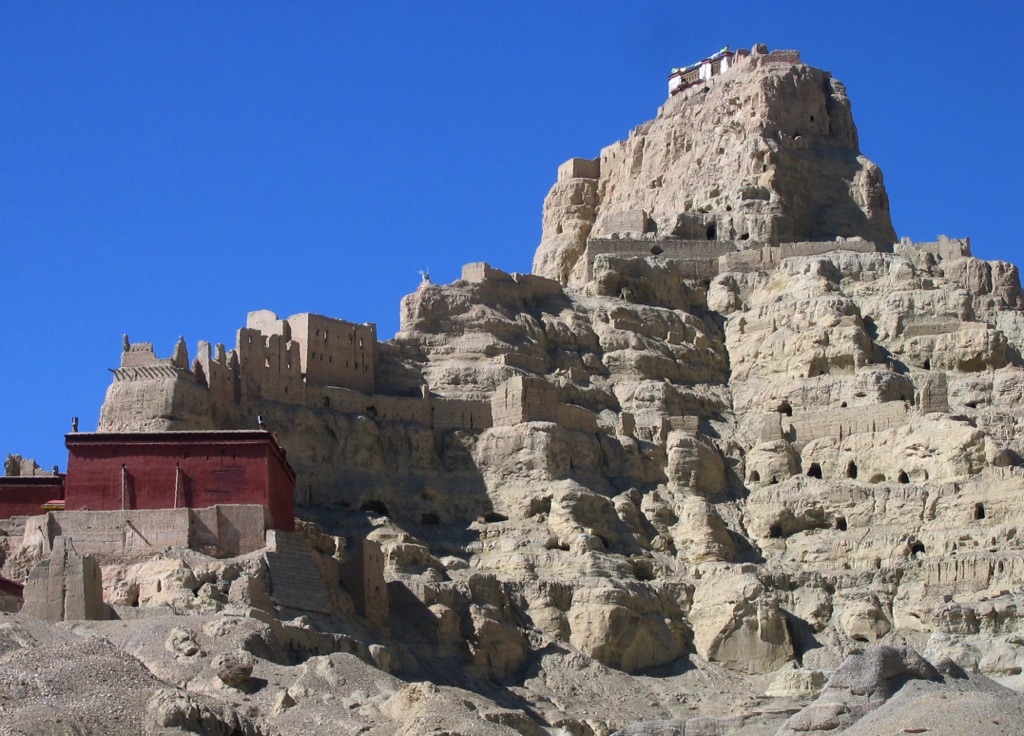
The main structures include the Red Temple and the White Temple, named for their predominant color schemes. These temples house some of the most well-preserved murals and statues, which depict religious figures and scenes from Buddhist mythology. The construction techniques of the Guge kingdom were advanced for their time, utilizing local materials such as mud, wood, and stone.
The intricate carvings and mural paintings within the temples showcase the artistic prowess of the Guge people. The use of color and the depiction of human figures are particularly notable. The preservation of these artworks is remarkable, considering the harsh weather conditions and the passage of time.
The layout of the ruins suggests a well-organized urban plan, with residential areas, monastic quarters, and administrative buildings. The complex also includes underground tunnels and storage rooms, indicating a sophisticated understanding of engineering and urban development.
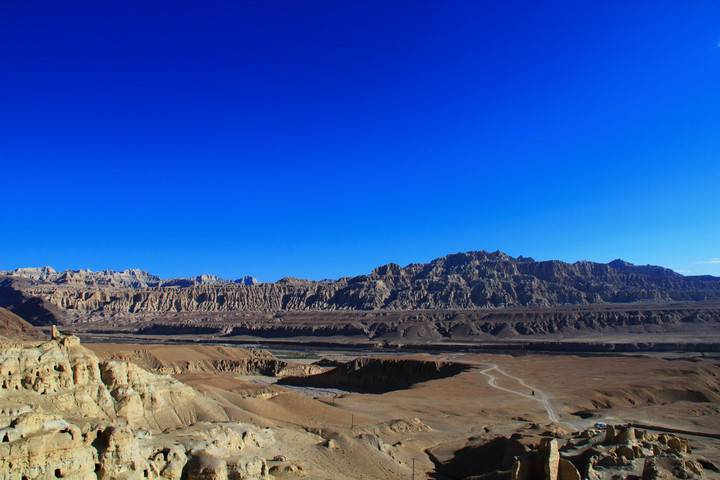
The Ruins of the Guge are not only an archaeological treasure but also a spiritual heritage site. They continue to be a place of pilgrimage for Buddhists and a source of inspiration for artists and historians. The site’s remote location has helped preserve its artifacts, offering a rare glimpse into the past.
Theories and Interpretations
Theories about the Ruins of the Guge abound, particularly concerning the kingdom’s sudden decline. Some historians suggest that an invasion by Ladakh in the 17th century led to its downfall. Others propose that a catastrophic event, such as an earthquake or a climate shift, caused the abandonment of the site.
The religious significance of the Guge kingdom is evident in the numerous temples and monasteries found within the ruins. Theories suggest that Guge was a key player in the second diffusion of Buddhism in Tibet. The kingdom’s patronage of the religion helped to cement its influence across the region.
Mysteries also surround the intricate murals and statues within the temples. Some interpretations match these artworks to historical records of Buddhist texts and figures. However, the unique style of the Guge art has led to debates about the influences and origins of these creations.
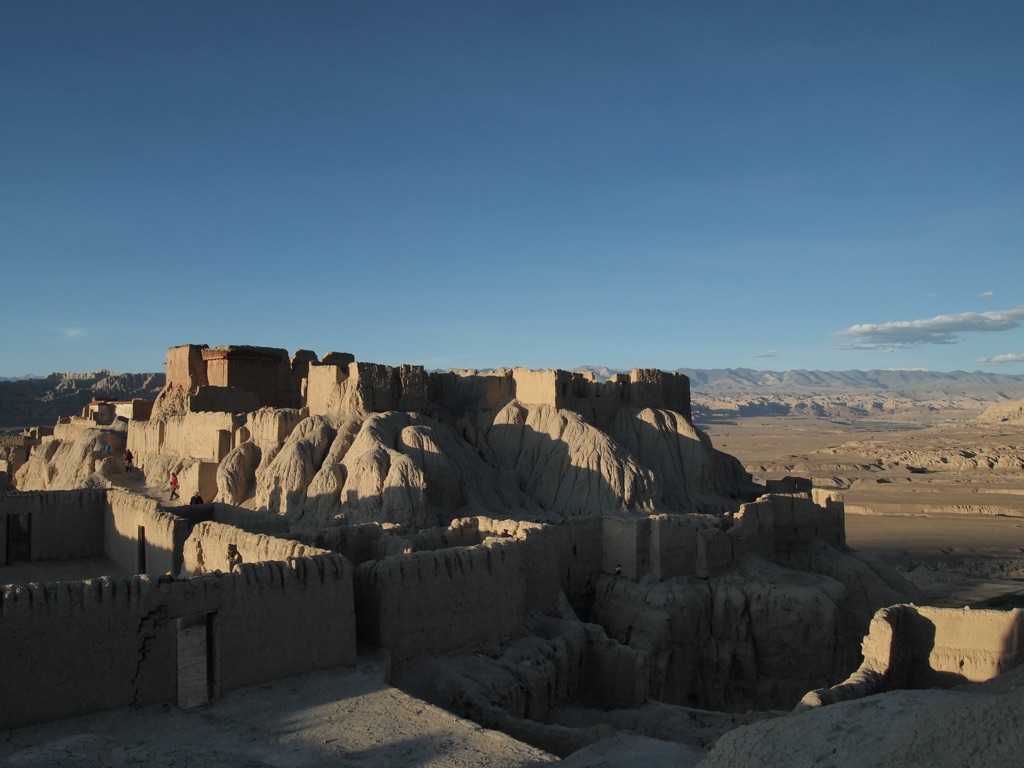
Dating the ruins has been a complex task for archaeologists. Carbon dating and other scientific methods have been employed to determine the age of the structures. These studies have provided a timeline for the kingdom’s existence and its cultural developments.
The Ruins of the Guge continue to be a subject of research and interpretation. Each discovery at the site adds a piece to the puzzle of the Guge kingdom’s history. The site remains a captivating enigma, inviting further exploration and scholarly debate.
At a glance
- Country: Tibet Autonomous Region
- Civilization: Guge Kingdom
- Age: Established around the 10th century AD

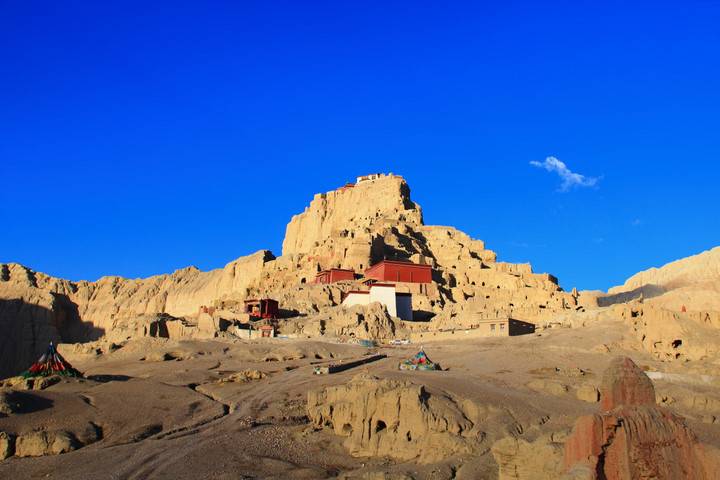
I have been checking out your website recently and am amazed about the different archaeological around the world.please keep up the good work.